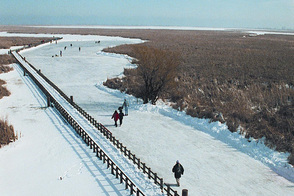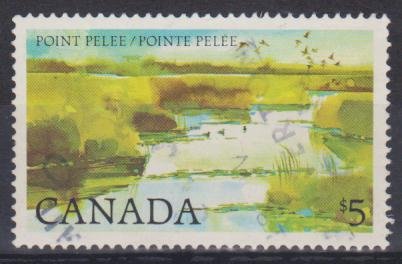
It's on the latitude of Rome, Italy. It grows trees native to Florida. It contains swamps and marshes. It boasts 27 species of reptiles and 50 species of amphibians. Acadian flycatchers, Carolina wrens and red-bellied woodpeckers are at the northern limit of their habitat. Monarch butterflies stop here on their fall migration to Mexico (http://www.pc.gc.ca/eng/pn-np/on/pelee/natcul/natcul1.aspx).

During peak season, as many as 10,000 monarch butterflies per day land at Point Pelee courtesy http://www.learner.org/jnorth/www/critters/monarch/833382137.html.
You might think it's a tropical area. Yet, come autumn, the trees lose their leaves. The lake freezes over. The clouds open up and the snow falls. After all, it's Canada -- the southernmost point, Point Pelee. Unlike Rome, which is surrounded by the moderating effect of the Mediterranean Sea, Point Pelee sits on Lake Erie, the shallowest of the Great Lakes which freezes over in the winter. Unlike Rome, which is protected by the mountains, Point Pelee gets the full brunt of the westerly winds.
 \
\
The Point Pelee boardwalk in winter courtesy http://pointpeleenationalpark5.weebly.com/climate.html.
Point Pelee is one of Canada's treasures, commemorated by Canada Post in 1983 by a stamp. For more information, visit http://alinefromlinda.blogspot.ca/2011/09/point-pelee.html or http://alinefromlinda.blogspot.ca/2014/08/preserving-point-pelee.html.

No comments:
Post a Comment